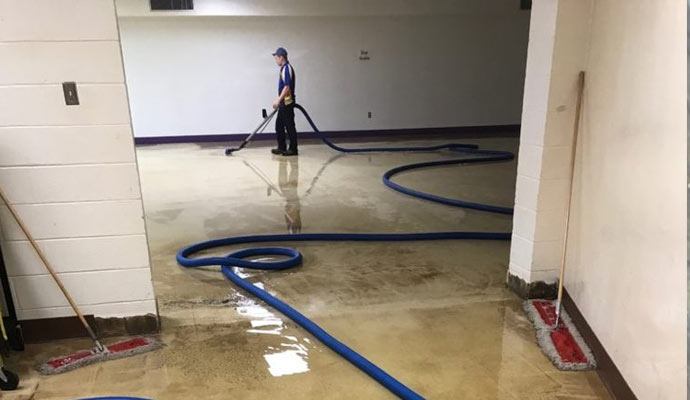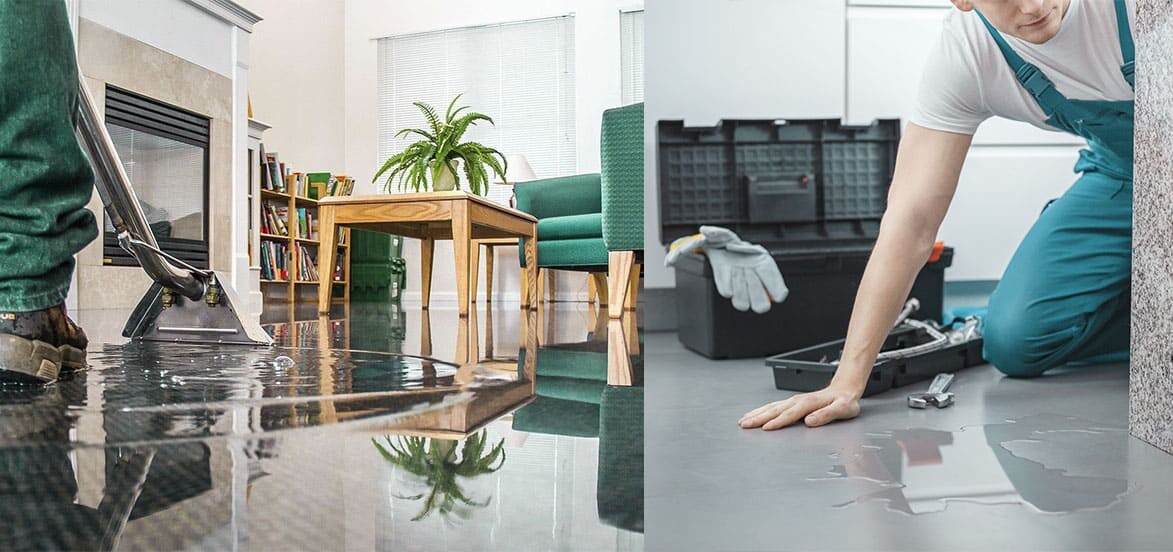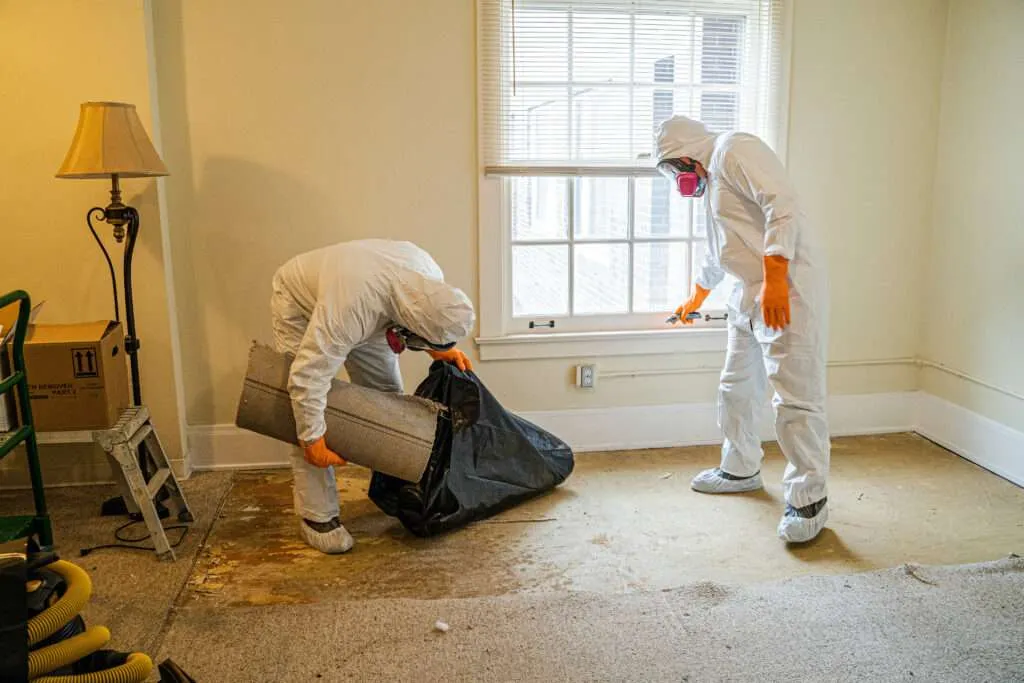How Flood Cleanup Services minimize long-term damage to property
Wiki Article
Water Damage Restoration 101: Recognizing the Process and Price
Water damage can strike all of a sudden, leaving property owners in a state of confusion. Understanding the restoration process is essential for efficient healing. From assessing the damage to choosing the right provider, each action impacts the total end result and cost. Aspects such as the type of water damage and necessity also play a substantial role. What are the particular strategies made use of in remediation, and just how can one prepare for prospective expenditures?Kinds of Water Damage

Preliminary Evaluation and Examination

Water Removal Methods
Adhering to the initial assessment, efficient water extraction techniques are used to mitigate damage and protect against additional concerns. These methods involve making use of specific equipment such as completely submersible pumps and industrial-grade vacuums - Emergency Water Removal. The choice of approach depends upon the volume of water existing and the kind of products affected. For standing water, completely submersible pumps are commonly used for rapid elimination, while vacuum cleaners are ideal for removing water from rugs and furniture. In addition, progressed methods like water extraction mats might be used for hard-to-reach locations - Water Damage Restoration. The goal is to remove as much water as feasible, reducing the capacity for mold and mildew growth and architectural damage. Trigger and reliable water removal is important in the total water damage repair procedureDrying and Dehumidification Process
As soon as the water removal is total, the drying and dehumidification procedure comes to be vital to restoring the afflicted area. This stage typically employs industrial-grade dehumidifiers and air moving companies to properly lower dampness degrees. The dehumidifiers pull in damp air, eliminating excess moisture, while air movers distribute air to increase dissipation. Tracking devices is often utilized to track moisture and temperature level degrees, ensuring optimal drying conditions. The duration of this process can vary depending upon the extent of the water damage and environmental elements. It is important to extensively dry all affected products, consisting of walls, flooring, and home furnishings, to stop mold growth and architectural damage. Appropriate execution of this step is essential for an effective restoration outcome.Cleaning and Sterilizing Afflicted Locations
A complete first analysis and assessment of impacted areas is important to determine contamination levels once the drying procedure is full. Flood Cleanup Services. Efficient cleansing strategies and proper items must then be employed to remove debris and stains. Sanitization and disinfection methods are vital to ensure that hazardous virus are eliminated, bring back the room to a safe condition.Preliminary Assessment and Examination
Prior to starting any kind of restoration efforts, a comprehensive initial evaluation and inspection of the influenced areas are essential for efficient cleansing and disinfecting. This procedure involves determining the extent of water damage, identifying the resource of the water intrusion, and reviewing the materials influenced. Assessors typically look for signs of mold and mildew development, architectural honesty concerns, and harmed possessions. The evaluation likewise includes inspecting wetness levels utilizing specialized equipment to ensure no surprise water pockets stay, as these can cause further problems. Recording the findings is vital for intending the following steps in the remediation procedure. A detailed first assessment enables remediation specialists to design a targeted approach for efficient cleansing and sanitizing, inevitably decreasing damage and health and wellness threats.Cleaning Techniques and Products
Reliable cleaning and disinfecting of water-damaged areas require a selection of methods and items tailored to the details products impacted. For permeable surfaces like drywall and carpets, extraction approaches are necessary to get rid of excess dampness, adhered to by deep cleansing with specialized cleaning agents. Non-porous materials such as ceramic tile or metal can be cleaned utilizing commercial-grade cleaners that successfully eliminate pollutants. Steam cleaning is another reliable technique, specifically for carpets and furniture, as it uses high temperature levels to eliminate germs and mold (Flood Cleanup Services). Furthermore, eco-friendly items are increasingly prominent for their safety and efficiency - Water Damage Restoration. Inevitably, choosing the suitable cleansing approaches and products not just assures prompt tidiness but additionally aids in preventing more here damage and health and wellness risks associated with water invasionSanitization and Disinfection Approaches
When dealing with water damage, correct sanitization and disinfection methods are essential to ensure the safety and wellness of the affected setting. After preliminary cleaning, surface areas need to be treated with suitable disinfectants to get rid of pathogens, mold and mildew, and bacteria that prosper in damp problems. Common approaches include the usage of EPA-approved chemical disinfectants, which can be used through spraying or cleaning strategies. Additionally, ultraviolet (UV) light systems can successfully sanitize areas by neutralizing bacteria without rough chemicals. The selection of technique typically depends upon the kind of materials affected and the extent of contamination. Eventually, detailed sanitization not just restores a safe home however also assists prevent future health and wellness risks related to lingering moisture and mold and mildew development.
Repair Work and Restoration Options
Examining the damage triggered by water direct exposure is crucial for establishing the appropriate repairs and remediation choices. House owners may deal with different problems, including harmed drywall, warped flooring, and jeopardized structural aspects. Relying on the level of the damage, repairs may involve changing sections of drywall, mounting brand-new flooring, or enhancing architectural beam of lights. In situations of serious damage, total replacement of damaged products could be necessary. Additionally, expert conservators commonly advise making use of wetness meters to examine concealed wetness degrees prior to determining on the very best strategy. It is essential to act immediately to avoid mold development and more degeneration. Selecting the best options not just recovers the residential or commercial property yet additionally ensures long-term security and functionality.Aspects Influencing Restoration Prices

The level of water damage directly affects the reconstruction sets you back property owners can expect to sustain. Variables such as the source of the water, the duration of direct exposure, and the afflicted products significantly affect pricing. For example, clean water damage from a busted pipe is usually much less costly to restore compared to damage brought on by sewage. In addition, the level of contamination dictates the requirement for specialized cleansing and disposal solutions, further enhancing costs. Geographic location likewise plays a duty, as local labor prices and schedule of restoration solutions can vary. The urgency of the response affects prices; quicker treatments typically lead to lower overall expenses by preventing further damage. Understanding these elements is crucial for house owners when approximating repair prices.
The 3 key types of water damage are categorized based on contamination levels: tidy water, gray water, and black water. A thorough first assessment and inspection are essential actions in the water damage restoration procedure. For standing water, completely submersible pumps are normally used for rapid removal, while vacuum cleaners are ideal for extracting water from carpetings and furniture. The extent of water damage straight influences the remediation costs house owners can expect to incur. Clean water damage from a busted pipeline is generally much less costly to bring back contrasted to damage triggered by sewage.
Report this wiki page